Board layout and components
AMD has almost surpassed itself with the circuit board. Well equalized hotspots and a very well thought-out design with a very neat input filtering after the two 8-pin connectors, which relies on a proper LC filter (low pass) and not only on longitudinal coils (chokes), should on the one hand attenuate the load peaks on the power supply and on the other hand increase the stability of the whole system. Nobody really needs annoying HF-wave salad. With an XDPE132G5C from Infineon, AMD has opted for a very high-quality PWM controller that drives the 11 phases for VDDC_GFX of the RX 6800 XT Nitro+.
For all major active components and coils, Sapphire uses the same component selection as AMD’s reference. It was the right decision. In the upper left corner we see the BIOS switch and in the middle right corner an aRGB connector for further LED elements.
Parallel to this, IR352717 is also working for the generation of other partial voltages such as 2 phases for VDDC_SOC and 2 phases for VDDIO_MEM. In addition, we find a phase for VDDCI, so that in total there are 16 phases for the different main voltages, all of which operate with one TDA21472 per phase as a Smart Power Stage, which can deliver a maximum of 70A. The TDA21472 includes a synchronous buck-gate driver IC in a co-package with Schottky diode and the high-side and low-side MOSFETs. The combination of gate driver and MOSFET (DrMOS) allows higher efficiency at the low output voltages for the GPU.
The internal MOSFET current measurement algorithm with temperature compensation achieves a higher current measurement accuracy compared to the best DCR sensor methods with inductance (Inductor DCR). Protection includes cycle-bycycle overcurrent protection with programmable threshold, VCC/VDRV-UVLO protection, phase fault detection, IC temperature reporting and thermal shutdown. The TDA21472 also features automatic replenishment of the bootstrap capacitor to prevent over-discharge.
The TDA21472 also features a deep sleep power saving mode that greatly reduces power consumption when the multiphase system enters PS3/PS4 mode. This certainly explains the very low idle load that both new Radeon cards produce. The used coils with 150 mH are quite decent, but sometimes they buzz quite audibly. AMD uses a total of 8 GDDR6 memory modules from Samsung with 16 Gbps.
The back is quite tidy and you won’t find any SP or POS caps underneath the BGA. in general, everything seems to be very high quality in most parts and otherwise at least very functional equipped. Instead of elaborate design stunts, the focus here is on solid home cooking, which can really please. We also see the white areas for light distribution around which various aRGB diodes have been placed.
Cooler and backplate
Sapphire relies on two 9.5 cm fans with 11 rotor blades and a counter-rotating 8.7 cm fan with 9 rotor blades in the middle. The geometry of the impellers is solved in an interesting way and is very much reminiscent of special fans for thicker radiators with a very high static pressure. This is exactly what Sapphire has not only intended but also achieved, significantly minimising the noise of air breakage at the very widely spaced cooling fins. This allows the same noise emission to be achieved despite higher speeds, but significantly increases throughput and pressure, which always improves cooling performance.
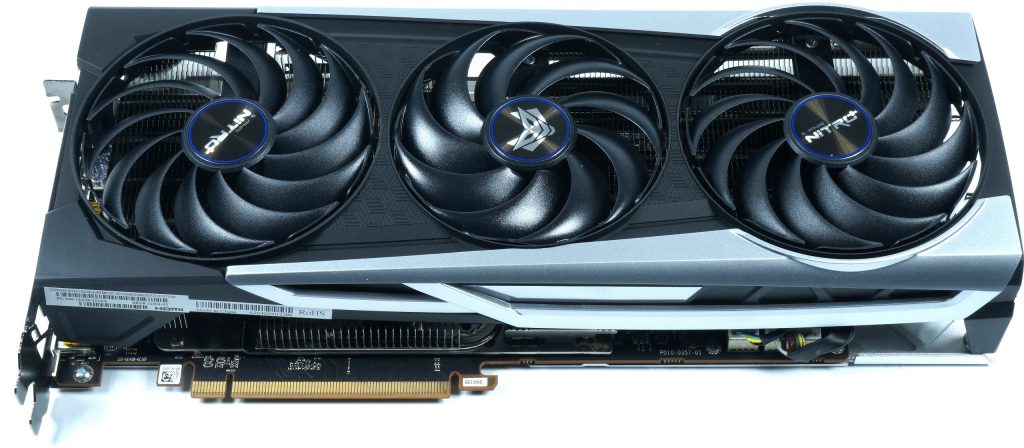 The cooler is divided into the rather delicate but very long main cooler with a total of six very fast 6 mm heatpipes made of nickel-plated copper composite material, which were flattened behind the GPU copper heatsink and soldered to it. Directly blown on cooling fins are also placed above it. This construction is amazingly light and proves once again that weight alone is not everything, if you do it smart enough.
The cooler is divided into the rather delicate but very long main cooler with a total of six very fast 6 mm heatpipes made of nickel-plated copper composite material, which were flattened behind the GPU copper heatsink and soldered to it. Directly blown on cooling fins are also placed above it. This construction is amazingly light and proves once again that weight alone is not everything, if you do it smart enough.
The memory and the voltage transformers are cooled by a separate cooler screwed to the board. Here a circumferential, flat heat pipe is used, whereby the four heatsinks are connected with a total of three fin heat sinks. The air comes directly from above and now you understand the sense of the fans with the high static pressure. Otherwise, only gentle swirls would arrive here.
This construction is quite efficient and additionally stabilizes the area around the GPU.
The backplate is a further component of the stabilization and also an optical eye-catcher. Only the one with the narrow heat conducting pad as a connection of the backside under the voltage converter is a bit silly and should be practiced a bit more. Here the double width would have worked wonders. But in principle it is enough, because the rest is already well cooled.
- 1 - Einführung und technische Details
- 2 - Teardown: Platine, Spannunsversorgung, Kühler
- 3 - Gaming Performance
- 4 - Leistungsaufnahme beim Gaming und Effizienzanalyse
- 5 - Leistungsaufnahme, Spannungen und Normeinhaltung
- 6 - Lastspitzen und Netzteil-Empfehlung
- 7 - Taktraten und Temperaturen
- 8 - Lüfter und Geräuschemission ('Lautsärke')
- 9 - Übersicht, Zusammenfassung und Fazit















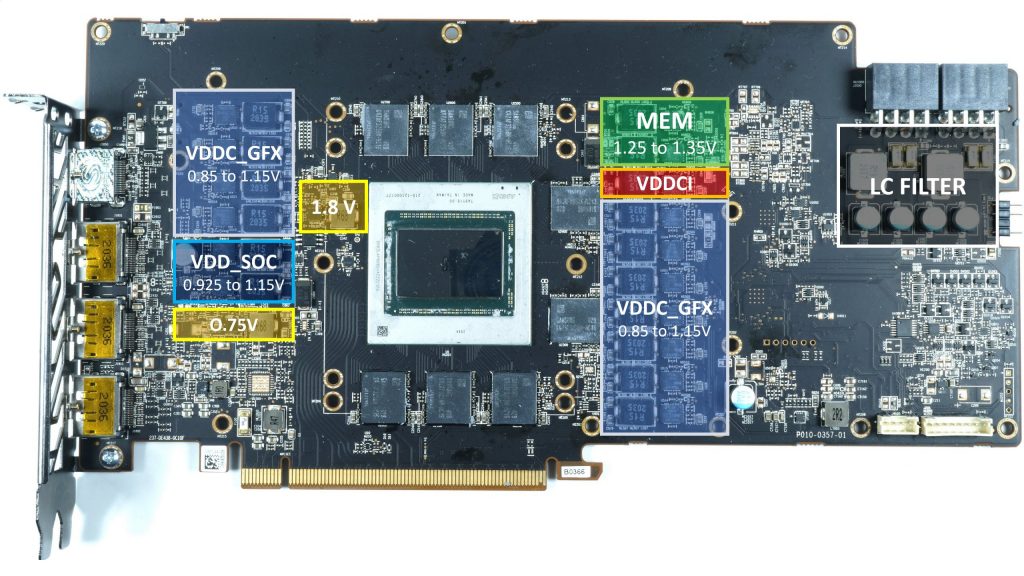
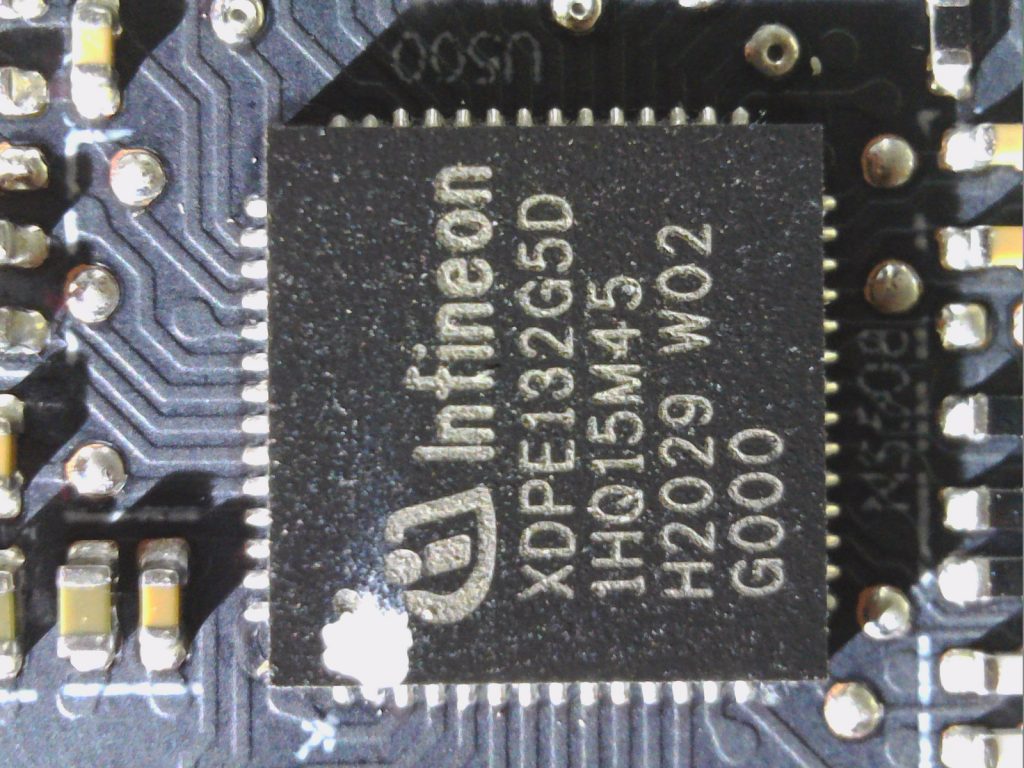
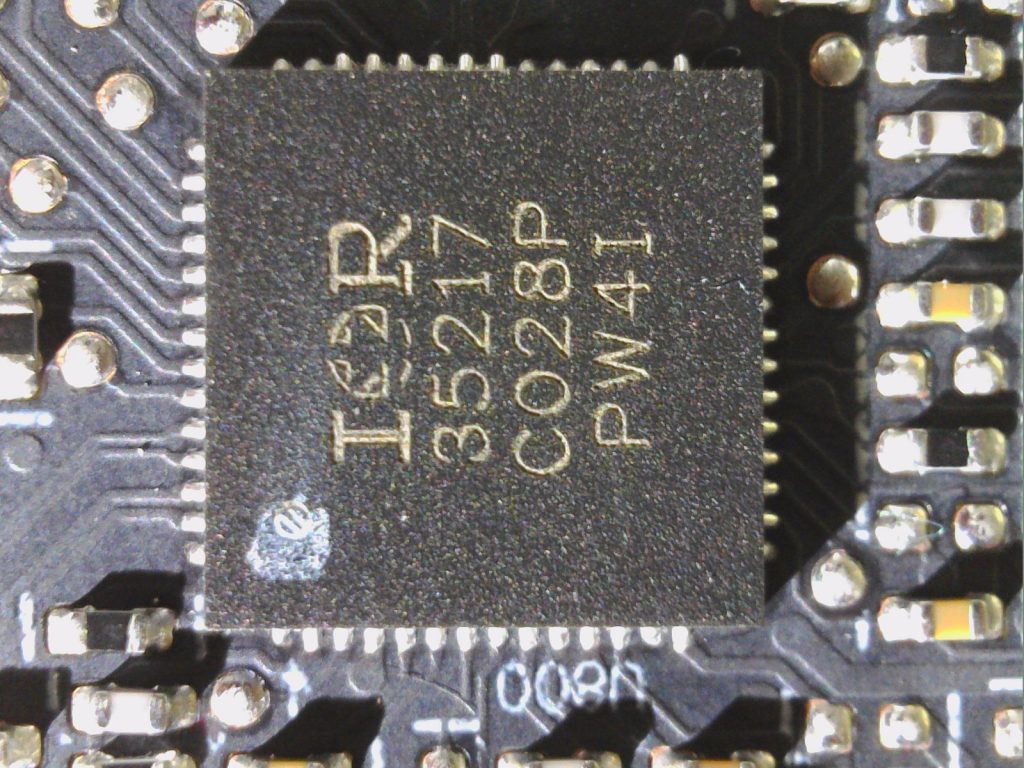
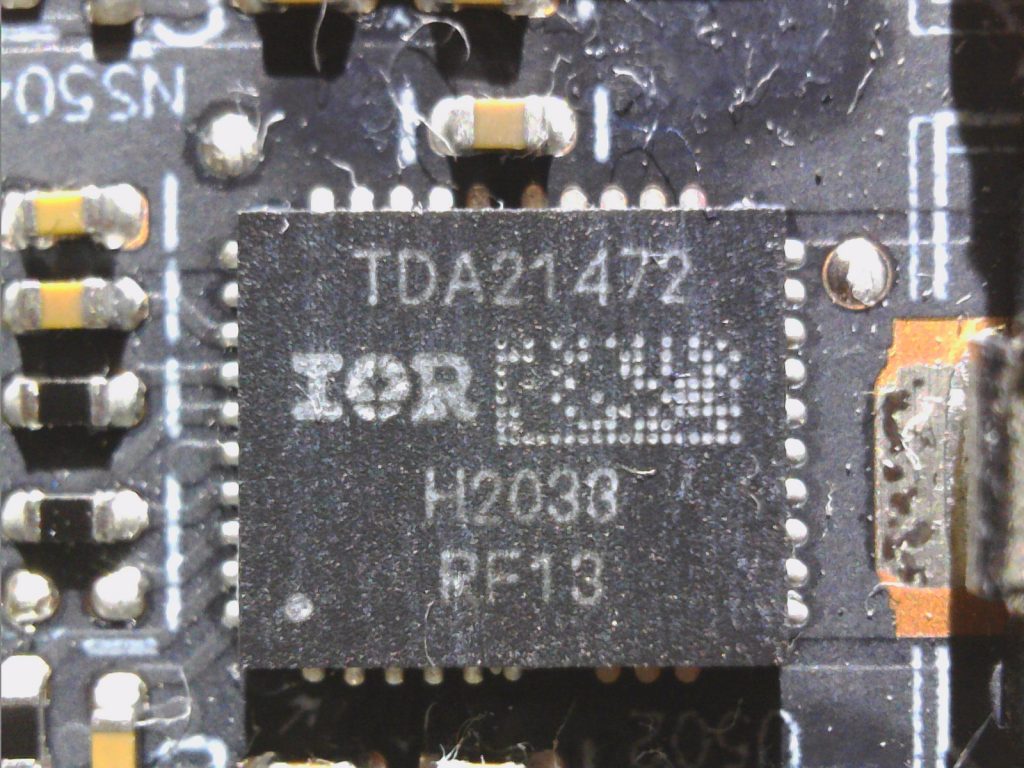
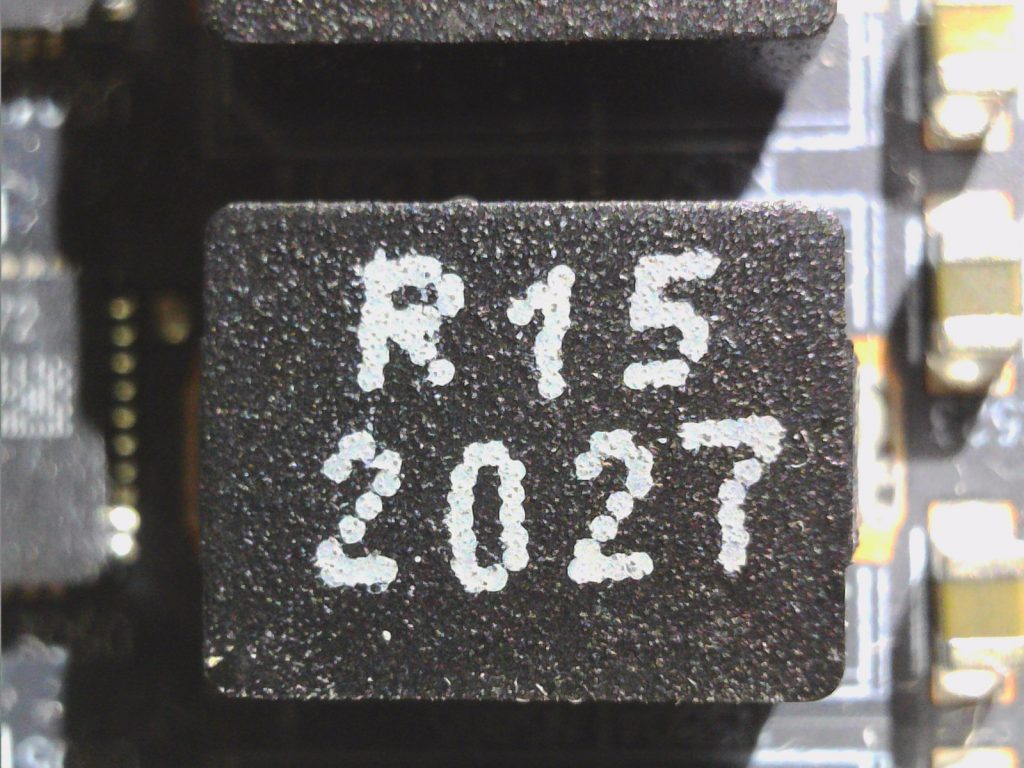
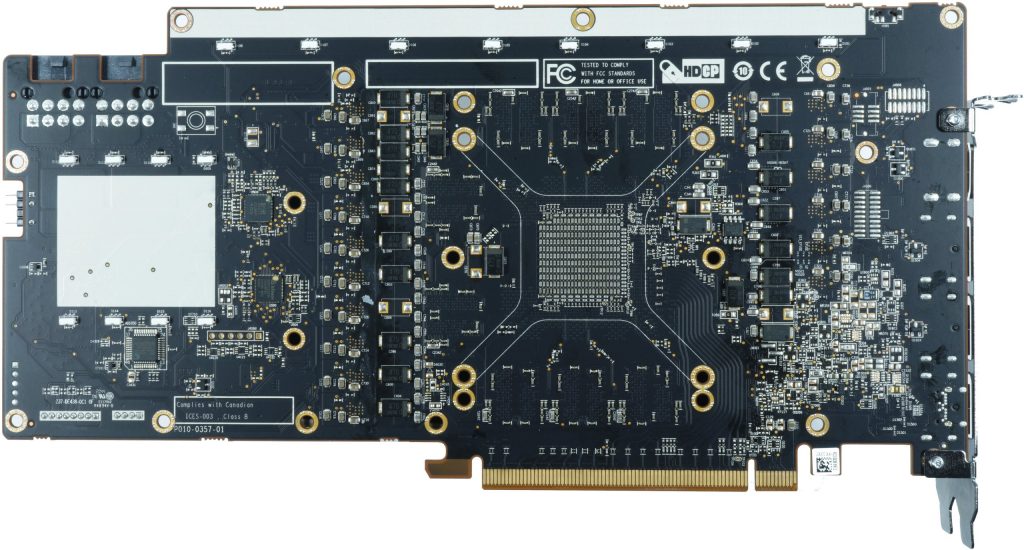
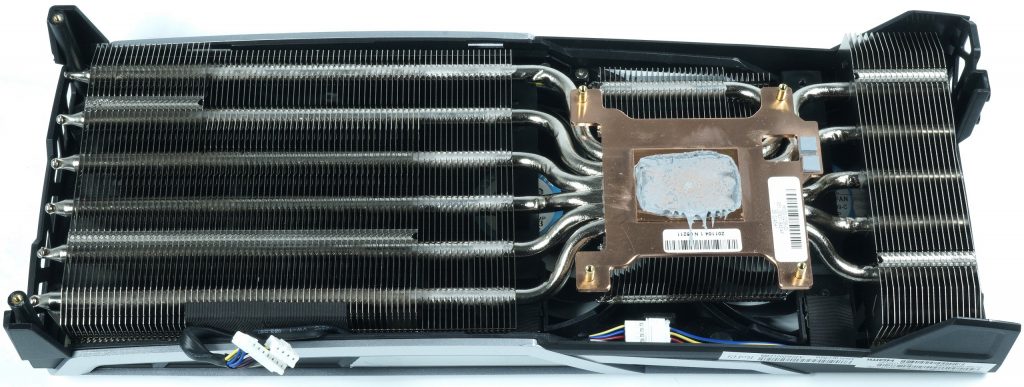
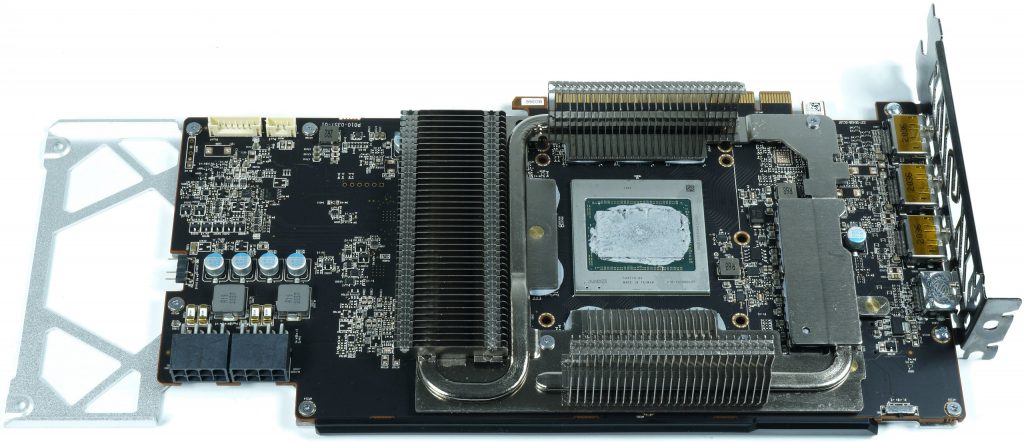
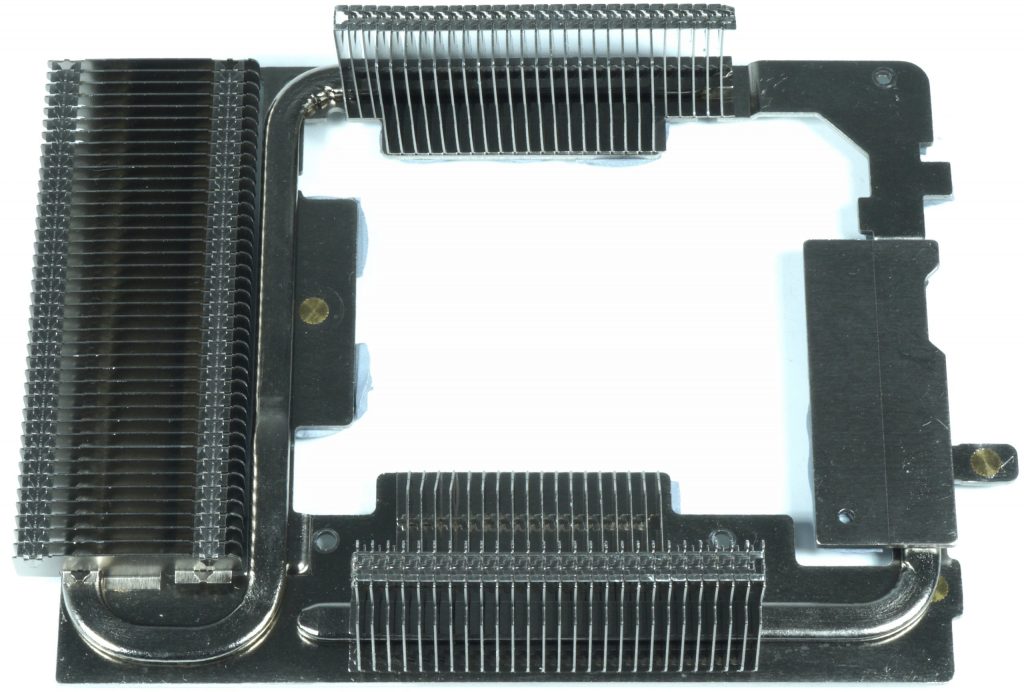
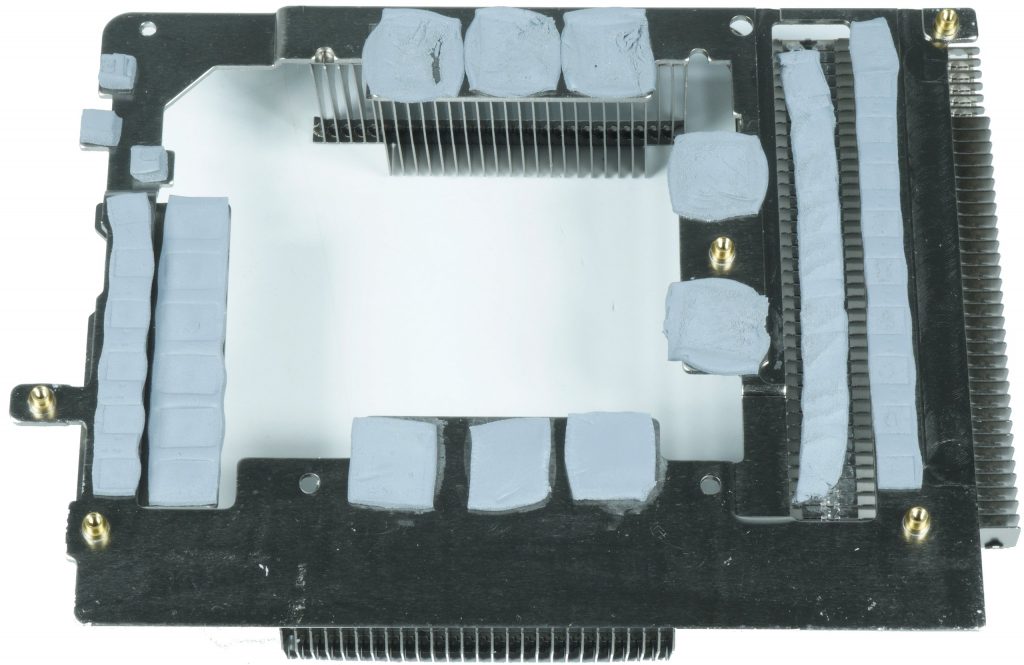
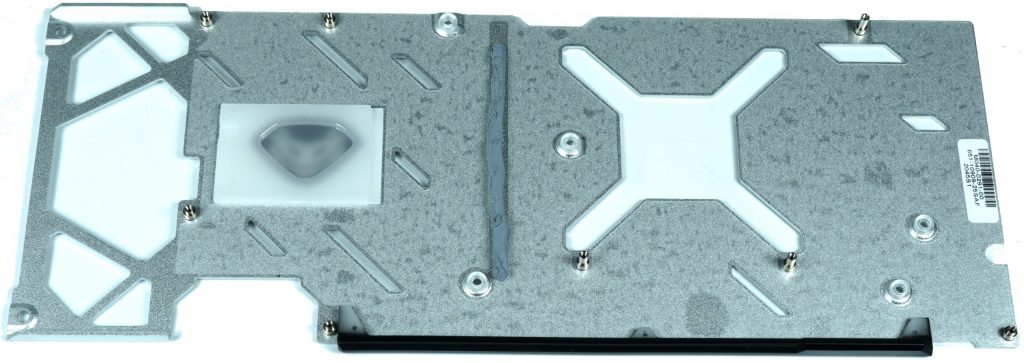


















Kommentieren